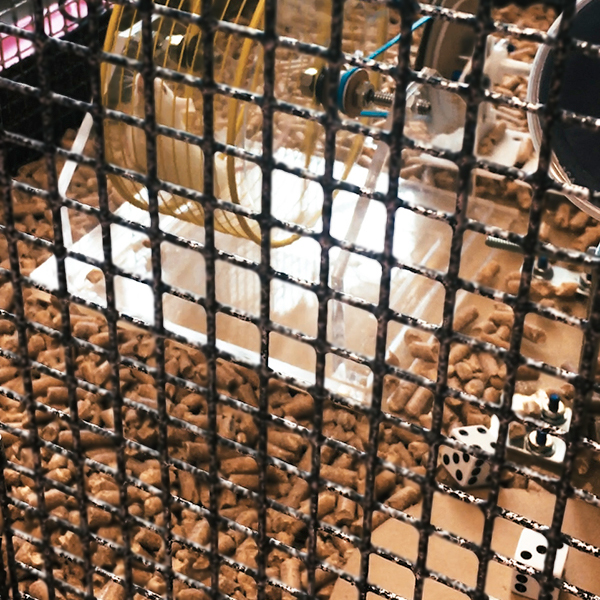
- This event has passed.
Pre-Opening: Lucky Mice Throwing Dice by Joe Davis (Art’s Work/Genetic Futures)
October 17, 2019 @ 10:00 am - 4:00 pm
Free
Pre-Opening: Lucky Mice (Throwing Dice) by Joe Davis
Thursday, October 17, 10 am – 4 pm,
D.H. Hill Jr. Library Exhibit Gallery, First Floor, East Wing, Room 1120
Brown bag lunch and artist discussion (12 – 1 pm)
RSVP for pizza lunch at 12 pm
Daytime opening at D.H. Hill Jr. Library location. Lucky Mice was inspired by Larry Niven’s fictional Ringworld series where aliens carry on secret experiments to enhance good luck through human breeding. While serendipity might be ascribed to chance, closer examination suggests it is chance coupled with coincidence. Both judgment to recognize, and ability to accommodate unexpected events underlie all serendipitous discovery. History recounts many unexpected accidents that, through reasoning and deduction become transformed into opportunity. Investigations of luck have been undertaken in psychology, cognitive science, information science and economics, but correlations of serendipity and genetics have never been studied.
In this experiment, we will observe serendipitous behaviors with mouse-operated dice-throwing apparatus and pursue in vivo selective breeding of “lucky mice.” This scientifically rigorous approach will abide by protocols for ethical research and humane treatment of laboratory animals. Use of live mice highlights human-animal relationships in art and science and examines protocols underlying use and care of laboratory animals.
JOE DAVIS pioneered laser carving methods at Bell Telephone Labs and U. Cincinnati Medical Center in the 1970s. In 1981 he joined MIT Center for Advanced Visual Studies as Research Fellow and Lecturer. His Microvenus (1986) was the first genetically engineered art. Davis joined the Harvard laboratory of George Church in 2010 as “Artist Scientist.” READ MORE
Art’s Work in the Age of Biotechnology: Shaping Our Genetic Futures (Art’s Work/Genetic Futures) is an art-science exhibit and symposium of artists, scientists, and humanities scholars, led by the the NC State University Libraries and the Genetic Engineering and Society Center, held at the Gregg Museum of Art & Design, the physical and digital display spaces of the NC State Libraries and the North Carolina Museum of Art (NCMA). These activities will elicit discussion about genetics in society through the lens of contemporary art and offer viewers new ways to think about their role in the genetic revolution.
By combining science and art and design, the artists, and artworks chosen for display, will contextualize genetic engineering by bringing it out of the lab and into public places; challenging viewer’s understandings about the human condition, the material of our bodies, and the consequences of biotechnology. The exhibit(s), integrated curriculum, and cross-campus dialogues will raise awareness and discussion about biotechnologies and their consequences in our society, while drawing in art practices for reaching new communities.
Art’s Work/Genetic Futures: October 17, 2019 – March 15, 2020
Details and related events at: go.ncsu.edu/artswork